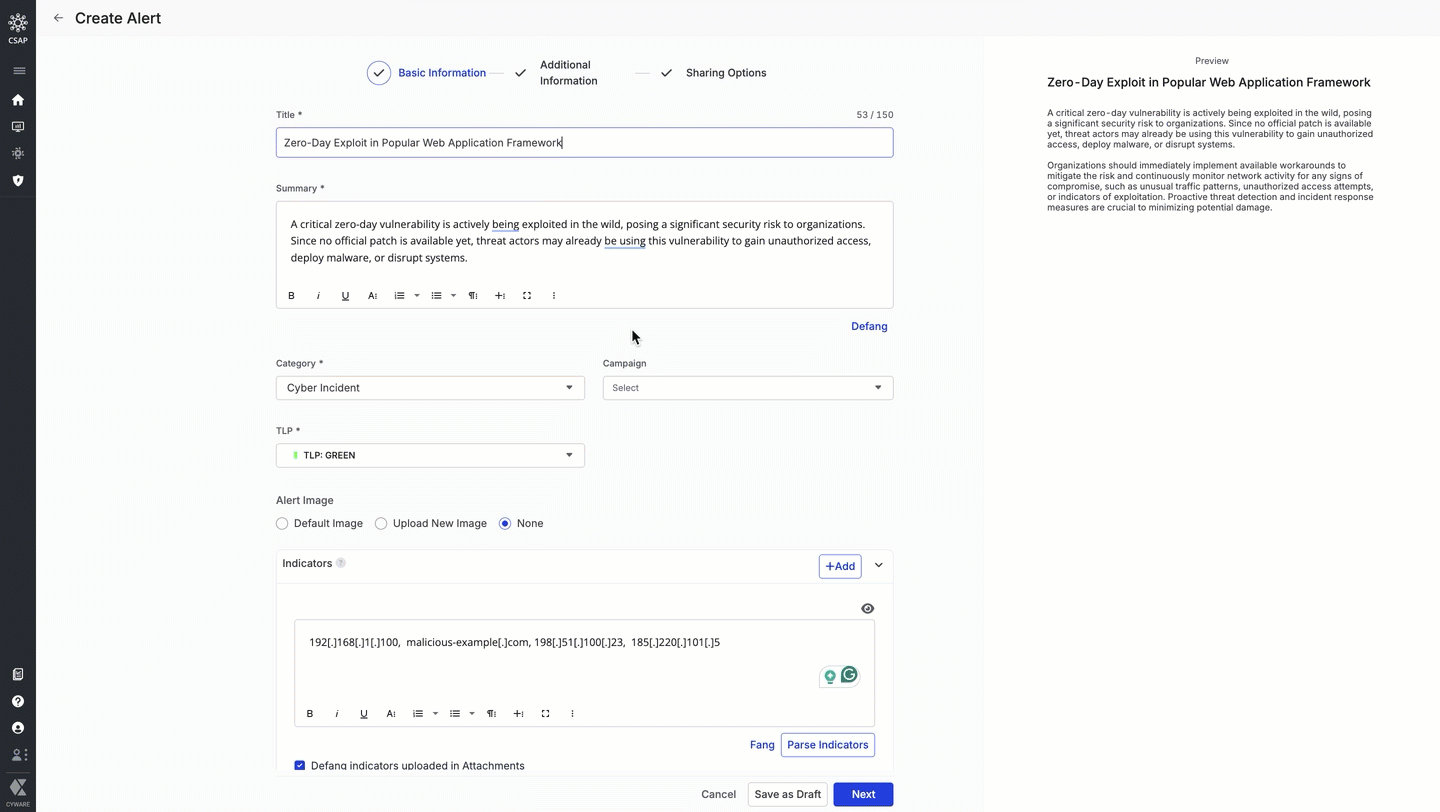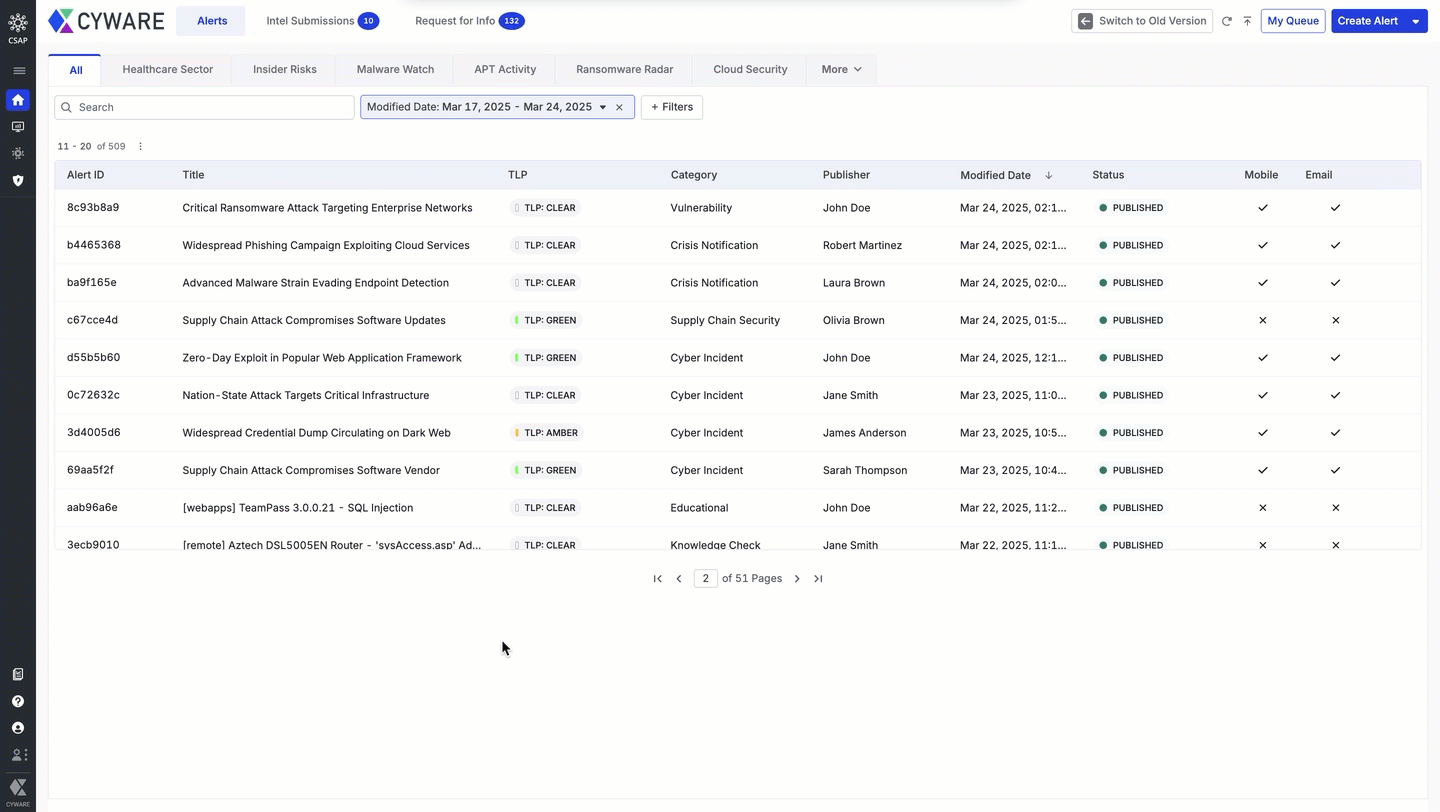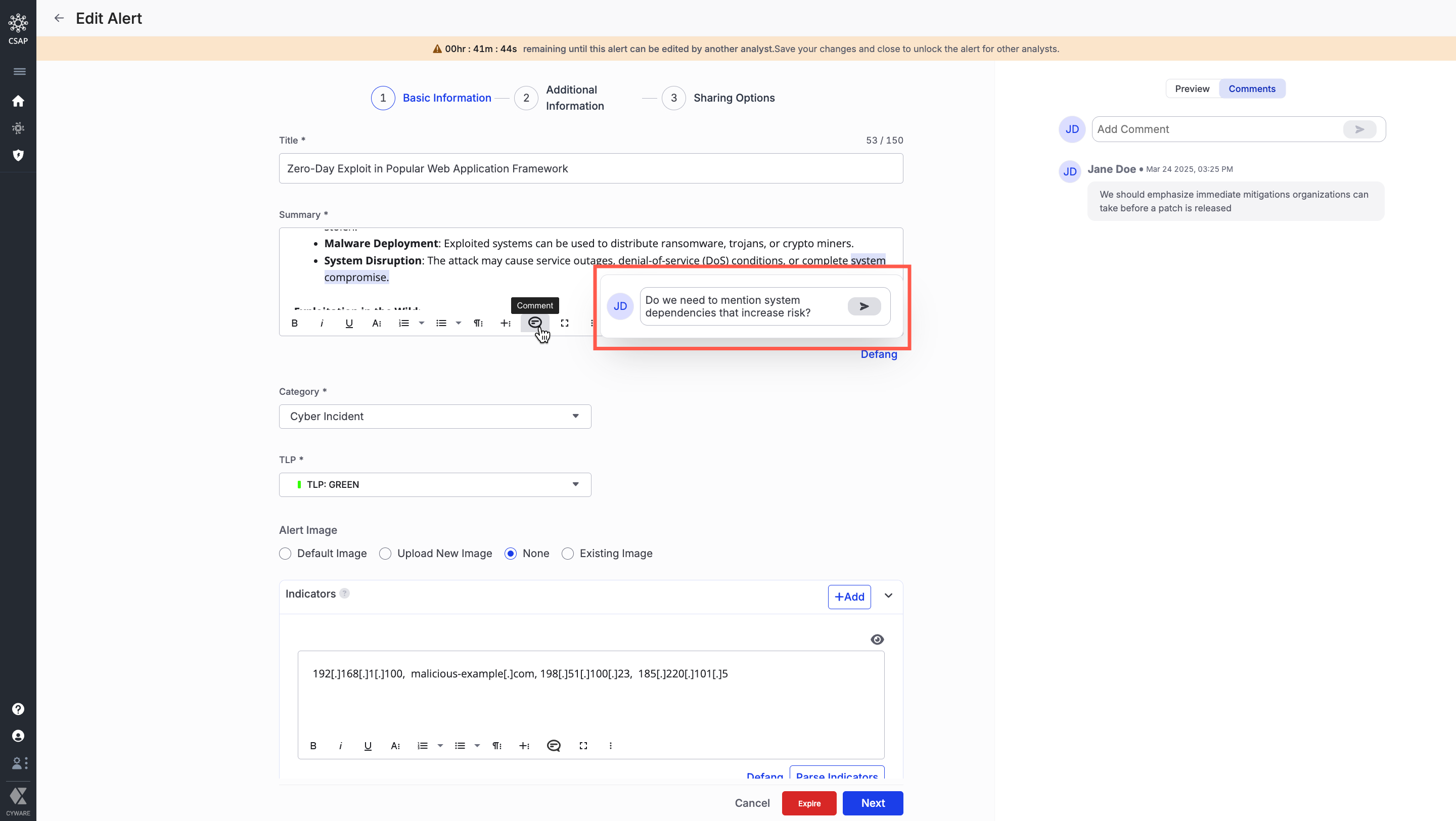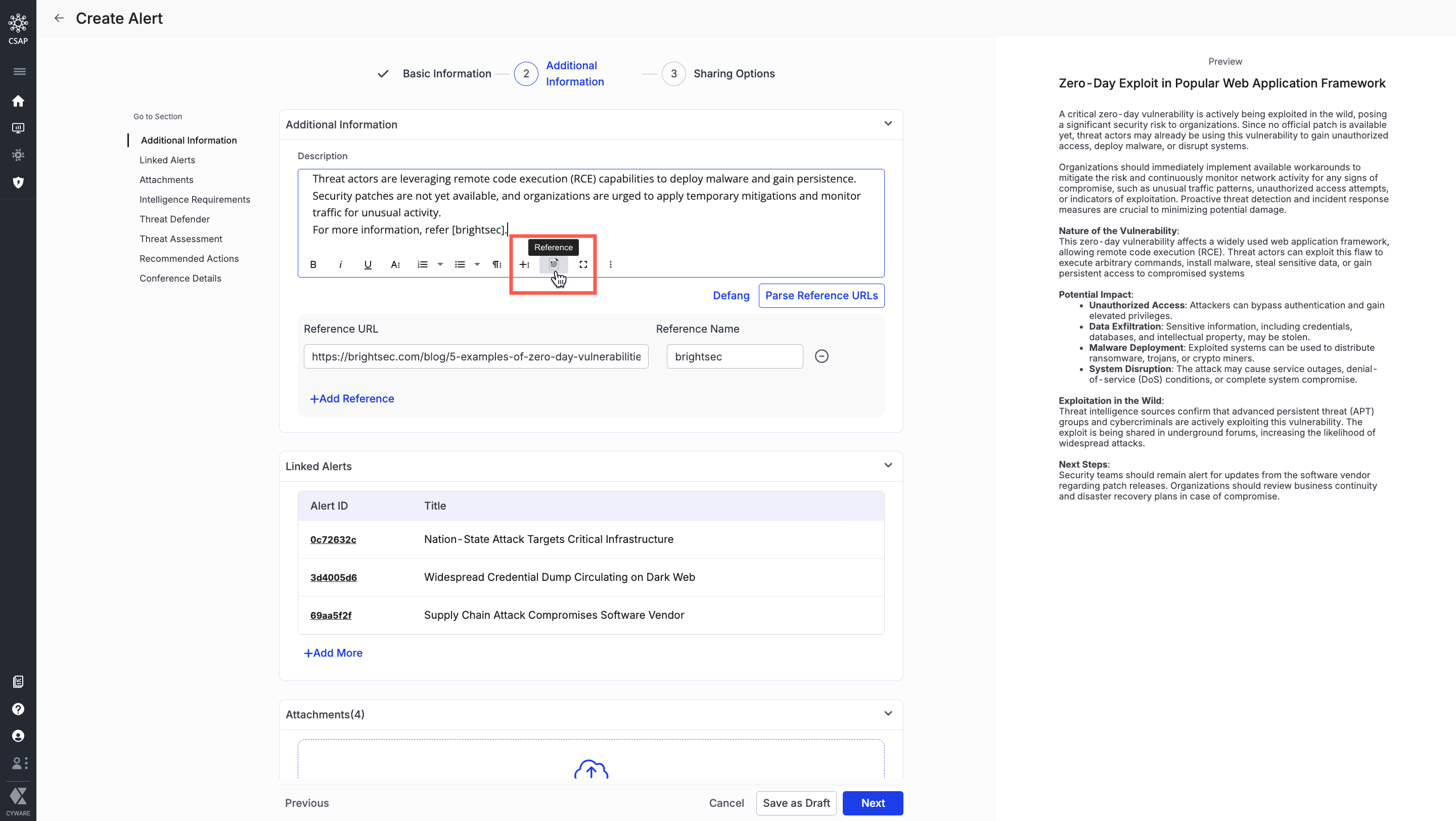Release Notes 3.8.7 (Limited Availability)
March 27, 2025
We are excited to introduce you to the latest version of Collaborate v3.8.7. This is a limited-availability release that features an enhanced UI for alert creation, along with several other enhancements.
Analyst Portal Enhancements
Alert Creation Form Enhanced
The alert creation form is redesigned with a more structured layout, reducing nine sections to three. This improves efficiency by simplifying data entry, adding context, and managing alert distribution in a more intuitive workflow.
The form is structured into the following three sections:
Basic Information: Enter key alert details upfront, such as the title, summary, category, IOCs, tags, and any additional fields associated with the category to establish a clear and well-organized foundation. With all the category associated fields grouped together in the configured field order, you can quickly complete this section and proceed with publishing the alert by simply selecting recipients.
Additional Information: Add supporting details to enhance alert context. Link past alerts for reference, attach files, and include Intelligence Requirements (IRs) to enrich the alert. You can also add Threat Defender Library content for threat detection, hunting, and defense, provide threat assessments to evaluate risks, suggest recommended actions for response, and include conference details for coordination.
Sharing Options: Manage alert distribution by selecting recipients, enabling push notifications, and configuring distribution settings to ensure alerts reach the right audience. Now, you can also assign recipients for Threat Assessment and Recommended Actions within this section. Before publishing, preview the alert details to ensure everything is accurate.
 |
For more information, see Alerts v2 (Limited Availability).
Alert Listing and Details Enhanced
The alerts listing page now features an improved UI with a dedicated filter alongside the search bar, making it easier to find relevant alerts.
Additionally, the alert details page is redesigned for better readability. Key information is now logically grouped into the following three sections, allowing for quicker access and improved usability:
Alert Details: View key information, including the title, description, alert ID, linked references, and more for quick context. This section also includes additional details based on the available alert data.
Sharing Options: Check recipient details, publishing preferences, and the count of recipients at publishing and in real time.
Responses: Track recipient interactions, such as threat assessments, event attendance, RFI responses, and feedback.

For more information, see View Alerts.
Other Enhancements
As part of the new alert creation form, the following enhancements are now available:
You can now add inline comments while reviewing or editing an alert in draft, submitted, or reverted status, making it easier to provide targeted feedback. Additionally, you can click any highlighted text to preview comments from analysts in the Comments section, making it easier to track changes.

For more information, see Publish Alerts.
While viewing alert details, you can now add attachments to a published alert, ensuring recipients have the latest context and supporting details.

For more information, see View Alerts.
You can now add reference links in the Description field to provide additional context for alert details. These links will be visible in the Member Portal as added, allowing recipients to access relevant sources within the right sections.
For example, if the description includes intelligence from multiple reports, such as one on a threat actor and another on attack techniques, you can add separate reference links for each section. This makes it easier for recipients to verify information and explore relevant sources without confusion.

For more information, see Add Additional Information.
In Dashboard, you can now track the lifecycle of published alerts with the Total Time Alerts Spent in Draft, Submitted, Reverted, and Scheduled Statuses widget, making it easier to monitor alert timelines. It calculates the average time alerts spend in each status, grouped by category at the tenant level.